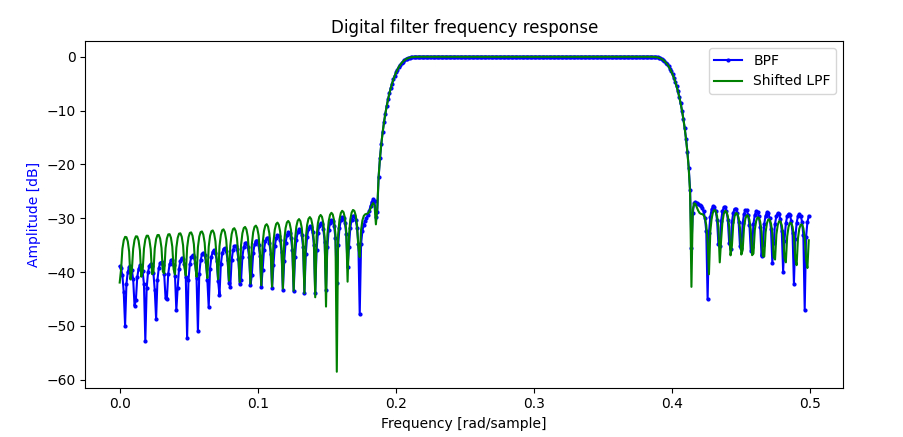If you need several bandpass filters with the same bandwidth, it's advantageous to derive them all from the same prototype lowpass filter (e.g., modulated filter banks). You only need to store one set of filter coefficients and you can compute the coefficients of the bandpass filters by modulation.
Concerning filter performance, an optimized bandpass filter should theoretically be (slightly) better than a corresponding modulated lowpass filter. Note that a modulated lowpass filter can only be used if the bandpass specifications are symmetrical with respect to the center frequency because the (real-valued) lowpass prototype has a magnitude response that is symmetrical about DC.
Let's take a look at the two most used optimality criteria for filter design: least squares and Chebyshev (minimax, equiripple, ...). For the equiripple design we use the Parks-McClellan algorithm. Assuming that we want the same minimum attenuation in both stopbands of the bandpass filter, we can use a modulated equiripple lowpass filter. However, since the magnitude of the resulting bandpass filter is given by
$$\big|H_{BP}(f)\big|=\big|H_{LP}(f-f_c)+H_{LP}(f+f_c)\big|$$
where $f_c$ is the center frequency of the bandpass filter, the resulting worst case stopband attenuation can be $6$dB less than for an optimized bandpass filter (see figure below). In the passband we usually won't notice much difference if the stopband attenuation is sufficiently large (because it is the shifted stopband response that is added to the passband response).
The situation is different for the least squares criterion. Here, the symmetry constraint can make quite a large difference, depending on the specification. The figure below shows that the optimized bandpass filter has a large stopband attenuation close to DC. The modulated lowpass filter must be symmetrical about $f_c$ and hence it can't show that behavior around DC.
However, note that the differences between optimal and modulated bandpass filters depend on the exact specifications, and in practice the slightly superior performance of the optimized filter may not be worth the extra implementation effort if several similar bandpass filters are required.



